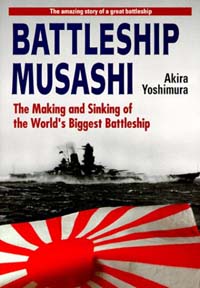 |
||||
![]()
- General
- Alternate History
- Air / Aviation tactics
- Aircaft (US)
- Aircraft (German)
- Aircraft (British)
- Aircraft (Japanese)
- Aircaft (Others)
- Army (US Army)
- Army (German Army, Waffen SS)
- Army (Japanese Army)
- Battle of the Atlantic
- Battle of Midway
- Computers and WWII
- Hitler
- Holocaust
- Intelligence in the War
- Iwo Jima
- Macarthur, Douglas
- Narratives of the War
- Naval Warfare
- Navies (General)
- Navies (US)
- Navies (Germany)
- Navies (Italian + French)
- Navies (Japanese)
- Navies (Bristish)
- Normandy
- Pearl Harbour
- POWS
- Rommel, Erwin
- Snipers
- Submarine Warfare
- Submarines (U-boat)
- Tank Warfare
- Tanks ( Panzer, German Forces)
- Tanks (American Forces)
- Tributes to the Soldiers of
WWII.
- War in the East
- War in the Pacific
- War in the West (Battle Of Britain)
- War in the West (1944 fall
of Berlin)
- Women in the War
![]()
- General
- Sniping
- Weapons
![]()
- General
- Aircraft (General)
- Aircraft (US)
- Aircraft (Soviet)
- Aircraft (European)
- Aircraft tactics
- Gulf War
- Jane's Recognition guides (Guns,
Aircraft, Ships, Tanks, Commercial
Aircraft)
- Sniping
- Marines
-
Well Known Military Authors
- John Keegan
Korea
- American
Airpower Strategy in Korea, 1950-1953
- Night Fighters
over Korea
|
Battleship Musashi Author: Akira Yoshimura, Vincent
Murphy (Translator) |
Customers
who bought this book also bought:
|
|
|
Musashi was built in the Mitsubishi shipyard at Nagasaki, a town which in the late 1930s had a substantial Chinese community. When it was decided to award the construction contract to the Mitsubishi yard, the Japanese secret police's paranoia was so great that they moved into Nagasaki's Chinatown and more or less destroyed it in a night. They arrested almost every inhabitant and - while they were about it, so to speak - beat several of them to death for being suspiciously Chinese. The shipyard was overlooked by hills; Japanese secret police would hide in those hills arresting and torturing any hill-walkers or ramblers thought to be paying too much attention to the view towards the shipyard below. Anyone hillwalking around Nagasaki had to face the land at all times, or else. The police did this even though nothing could actually be seen of the shipyard - because the shipbuilders, as well as building the world's largest battleship, were doing so behind the world's largest sisal-rope curtain. This weighed 400 tons and used up almost the entire sisal-rope output of Japan, driving the price to ludicrous heights and creating another security problem in that people might start asking what the Navy needed all that sisal-rope for.... At one point in the construction, a blueprint of part of the turret ring was accidentally incinerated; assumed stolen, the builders were facing liquidation as spies by the secret police when its true fate came to light. And so it goes on. The ship itself feels like a metaphor rather than a real entity; one has little impression of her other than as a vast, brooding presence, doomed by our foreknowledge of her fate. The ship is oddly anonymous, not least because the builders were not allowed even to know her name. Farcically, when she was launched, the dignitary involved mumbled it inaudibly into his hand so the people building her would not find out the real name of "Number Two Battleship"! Nor were they allowed to pool experience with the builders of Number One or Number Three Battleship, although they did learn the ominous news that the latter was to be completed as an aircraft carrier. No such useful fate for Musashi. The launch itself was a fraught operation; never having launched anything so huge before, there was concern that she might go careering uncontrollably across the channel and beach herself catastrophically on the opposite shore, so a raft had to be specially built and moored opposite the slipway. This way, Number Two Battleship would have something softer than the shore to crash into if such a thing happened. It didn't, of course, and off went Musashi to battle - or rather to war, to idle at Truk, to Lingga Roads, and other anchorages, for she only ever saw one battle. And even that was a battle against aircraft, to be sunk with contemptuous ease. She absorbed tremendous damage, but her anti-aircraft armament - 251 weapons, according to Januscz Skulski (in "The Battleship Yamato") - proved pitifully ineffective. Japan was always, after all, going to run out of battleships before America ran out of torpedoes. This book tells the story of perhaps the only unequivocally successful aspect of Musashi's career - the effort to keep her secret. The Americans never suspected Musashi's existence until they sank her; the point of her existence, arguably, remains a mystery to this day. Unputdownable!
|
||
All info and pictures in this site appear courtesy of the following web sites.
All questions and inquiries should be made to the webmaster.
Last updated : Monday, November 18, 2002 0:36 AM








